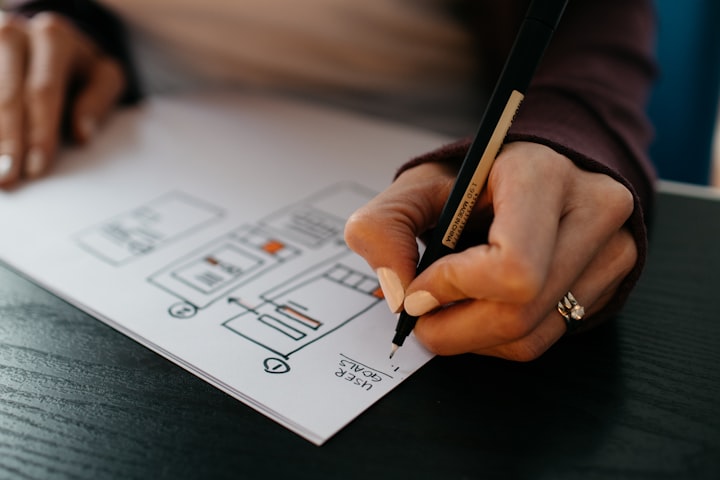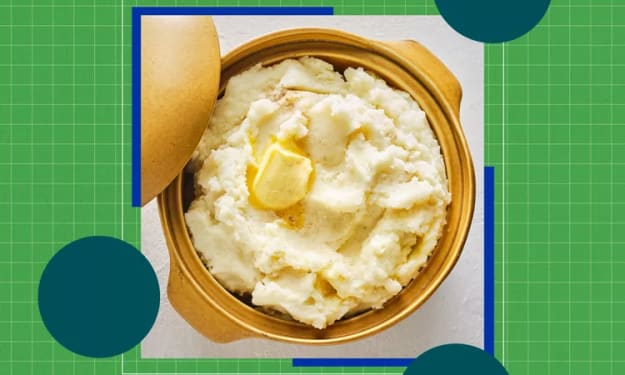
I want to share some useful tips regarding how to do a more straightforward Fast and maximize the health benefit of that. Although fasting has many health benefits for most people, something you sure be careful before starting doing a fast.
The 3 Foundations:
Fasting while eating junk food every day is not healthy at all. For example, if your dinner is mostly fast food or snacks, you are eating a lot of sugar and bad fats every day. I am sure it would be a painful experience entirely skipping breakfast for a day (that is about 10–12 hour fast, from dinner to lunch the next day). This painful experience should be the first impression of most people when they think about fasting.
To make it a habit, you need to make sure the experience is pleasant in the first few times, such that you can try again and again without too much willpower.
I would suggest working on the fundamentals first. Prepare yourself by regular exercise, eat healthily, and sleep well.
#1 Something about bad fats:
Another reason is, eating bad fats (highly reactive, i.e., polyunsaturated fat and long-chain fats) increase the potential of accumulation of toxins in your body. Living in modern society leads us to the exposure of environmental toxins, such as air pollutants, heavy metals from food sources, toxic mold.
Toxins in our body are waiting to be naturalized and excreted by our detoxification systems (mainly in the kidney). Those toxins cannot leave our bodies would be stored in our fat tissues (primarily white fat tissue).
Starting a fast would help our body to break down fat for energy conversion. This fat metabolism would trigger the releases of toxins stored in your fats. This will leads to what we called "Keto-Flu" (this also happens when going into Ketogenic Diet).
You may have Flu/ Allergy like symptoms such as running nose or fever, or even skin allergy. In my experience, this is unavoidable if you already ate unhealthy in the past. But the fewer toxins stored in your body, the less painful experience you will get during initial fasting.
There is another vicious cycle - "toxic fats" causes more inflammation and aging of our body (or Inflamm-aging). Thus more toxins cannot be removed and continue…
That is why I highly recommend removing bad fats from your diet or start eating less deep-fried food. Do not eat trans-fats for sure. Coconut, macadamia nuts, and avocado are some excellent sources of healthy fat/oil. Eat more good fats to replace bad fats in your body is also a good strategy.
How about sugar (or Carb)?
By using carbohydrates (mainly refined sugar) as your primary source of energy, your hunger is controlled by fluctuations of your blood sugar (or insulin). Your energy level would also be affected by these fluctuations. If you are getting used to a high carb diet, most likely, you feel tired and even dizziness if you do not eat at the usual mealtime. We called this metabolic in-flexibility.
Skip refined/ white sugar and eat more resistant starch
Not all carb are digested equally. Resistant starch is, in fact, good for our body. Resistant starch is a carbohydrate that resists digestion in the small intestine and ferments in the large intestine. As the fibers ferment, they act as a prebiotic and feed the good bacteria in the gut.
Some examples of food that are high in resistant starch are green bananas, beans, peas, and lentils, and "cooled rice." As an Asian, rice is a big part of my daily cuisine. Nowadays, I will only eat rice that is cooked in the previous day and re-heated.
While the texture is the same, but you will notice the difference after the meal. Even though I eat a full bowl of rice, I will not have the feeling of tiredness or sleepiness, unlike eating "fresh rice."
You can increase the resistant starch content of the food (such as sweet potato and potato)by "cook it and let it cool down." You can then reheat and eat it without noticing the difference of taste.
Another way to increase the content of resistant starch I often use is by adding Green Banana Flour to my food. For example, coffee, a bowl of rice, or use it as a substitute for white flour.

#2 Move your body!
During the pandemic, there are more excuses to be not doing anything but staying at home and watching Netflix. But it is also an excellent opportunity to try something new.
I am sure you know regular exercise is essential. It is also highly recommended to maintain an active lifestyle before getting into intermittent fasting. Doing regular exercise, I am not asking you to run 10km every day or do 100 push-ups in the morning.
You can go and take a walk after lunch or dinner. A walk after a meal can also help digestions and prevent the calories from becoming fat but will be diverted to muscles.
You may feel tired/low energy during a fast as you are depleting glycogen and blood sugar may drop. Adopting an active lifestyle also increases energy levels. It will make sure a smoother transition from glycogen to the fatty acid. Working towards better metabolic flexibility would help with the shift in the future.
Climbing upstairs is also good for your heart (The most accessible cardio exercise). If you do not want to go outside, or the gym is closed during the lock-down. I highly recommend trying climbing some stairs. In Hong Kong, we are living in tall buildings where my apartment is at 22/F.
Instead of going up by elevator, I often walk/ run upstairs. (It only takes 4–5 minutes from the Ground floor to the 22nd floor.) You can start from small and increase the number later on.
Sweating also helps to remove toxins from the body. Thus a better preparation for "keto-flu" and fat-burning.
#3 Rest and repair

Most of the repair and detoxification undergoes during sleeping. Make sure you are fully rested before fast to minimize the side effects and have a stronger will to withstand eating. You can also enjoy a more extended fast by sleeping longer!
Resting is not only about doing nothing. If you are sitting all day, then you should be active to give your body a rest. For me resting is about stop what you are doing and do something else.
On the other hand, if you spend a lot of time outdoors and involve a lot of physical activities, a good sleep or spend some time on a book would be a great relaxation for your body instead. For fasting, resting beforehand is required to maintain an adequate level of energy during a fast.
But for some exception, some people would be more comfortable to be extremely busy and tired during a fast. It will help you to get some sleep with an empty stomach when you are doing a prolonged Fast > 24 hours.
The next tip will also help you to skip your breakfast too.
Plan your fast. Skipping meals ≠ fasting

Intermittent fasting is not a "Starvation" for a short period. Skipping meals with hunger requires willpower. At the beginning of your fasting journey, you do not want to deplete your willpower from the time when you are awake until the next meal.
Also, there would be a high chance you will eat more and make a wrong decision on food choices later when you break your fast. Better start your day busy (not energy-demanding).
Fill your timetable
Keeping yourself busy during a fast is a wise move. Remember the time when your alarm clock did not go off, and you are going to be late for work? Will you think about what to eat or to go to work ASAP?
Keeping your mind occupied will give yourself less time to think about food. I am not suggesting to go to a gym and do resistance training the first thing in the morning (But that would enhance your benefit from fasting!) or be late every day for work.
You just need to be active instead of doing nothing. You can do everything you usually do (except breakfast!). Wake up, tidy up, and go to work. Or you like running/ exercise to start your day. Keep on doing what you usually do, just plan for a little bit extra work/ tasks for the morning. Being active during fasting can help to use up excessive ketones generated at night.
If you cannot be active or do not have a chance to move around due to the working environment or family matters, at least keep your mind busy. If you do not have many phone calls for your work, you may do some writing like 5MJ (5-Minutes Journal) or reading if you love books.
Schedule some phone calls for the morning and walk out while you are on the phone is easy to do and a productive way to help you fast. You can do that in the office or at home. You will find yourself more focused at work or easier to concentrate with an empty stomach once you get used to the feeling.
The simplest 24-hours fast is to start after dinner
Someone likes to break the fast at the usual breakfast time (In the morning) or eating two meals a day and skip dinner. It is totally up to you when to eat and how long you will fast. The best mealtime, according to our circadian cycle, should be eating before dawn and stop eating when the nightfall.
However, to balance your social life and health, it is easier to have meal time with friends or family at night and then stops eating until the next dinner than eating alone in the morning and do not join lunch/ dinner with people around you.
Moreover, seeing someone eating in front of you or leaving you alone by going out for lunch would make you feel bad about what you are doing. You do not want to feel more social distance during this period (Pandemic).
You can enjoy your meal time with others and if you are like me, only eat once per day usually, that particular meal would be very delicious! This fulfilled mealtime would give you a positive feeling to try fasting again. That's why I recommend starting fast after dinner.
For beginners, an 8/16 intermittent fasting, that is eating all your food in 8-hours windows and fast for 16 hours. For example, if you fast after dinner, say 21:00, then you will break your fast at 13:00.
If you are starving during the first few trials, try to maintain at least 14 hours, i.e., eating a late breakfast for some days. For me, my regular OMAD plan is eating at 19:00.
You can achieve OMAD from 8/16 intermittent fasting by:
- Delay your lunch weekly from 8/16;
- To 6/18;
- To 4/20;
- And finally to 2/22, which is an OMAD diet.
Takeaways
Thank you for reading my story. I hope you can get the benefits of fasting without my painful experience in the past. To summzrize my tips for fasting:
- Eat healthily, avoid bad fats and sugar, replace with resistant starch and good fat/ oil
- Be active and increase your energy baseline
- Rest well (to lower your stress level and inflammation)
- Start at night after dinner
- Try 8/16 at first, then increase the fasting window at your own pace
- Schedule your morning to reduce eating chances and urges
Happy Reading and Fasting.
About the Creator
Z3n Ch4n
Interested in Infosec & Biohacking. Security Consultant. Love reading and running.
hackernoon.com/u/z3nch4n






Comments
There are no comments for this story
Be the first to respond and start the conversation.